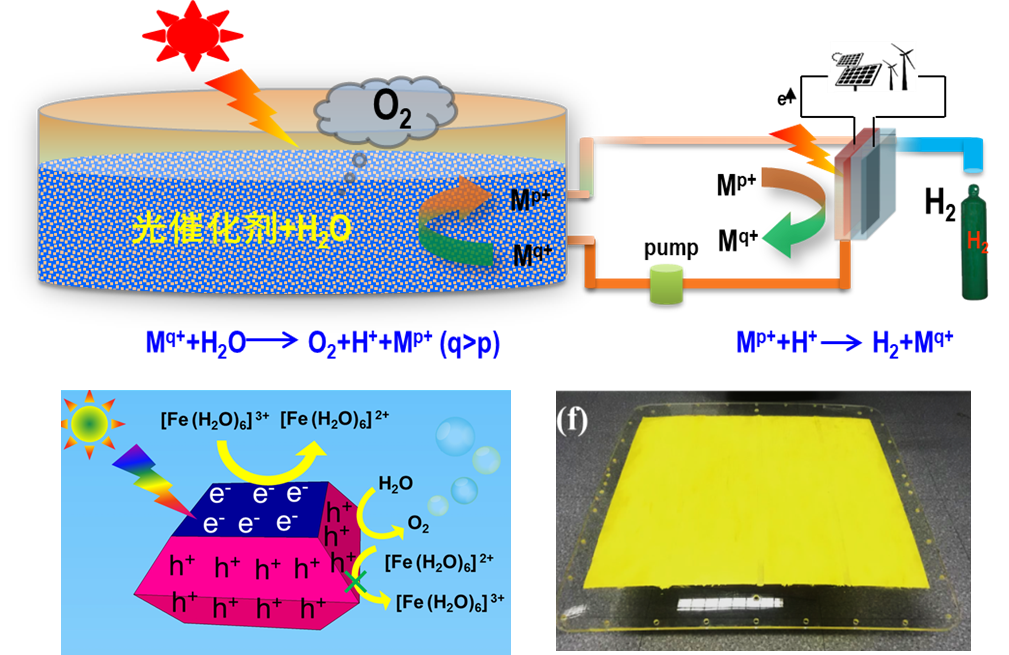Research groups led by Prof. LI Can and Prof. LI Rengui from the
Dalian Institute of Chemical Physics (DICP) of the Chinese Academy of Sciences proposed and demonstrated a practically feasible approach for scalable solar hydrogen production via water splitting. This approach realized a world record solar-to-hydrogen efficiency exceeding 1.8% so far.
Among the solutions for solar-to-chemical energy conversion, photocatalytic overall water splitting using particulate photocatalysts is regarded as an economical approach for large-scale hydrogen production. However, the method suffers from extremely low solar-to-hydrogen conversion efficiency due to the poor charge separation efficiency and the possible reverse reaction between H2 and O2.
Moreover, most of the reported visible-light-responsive particulate photocatalysts are only active for either hydrogen evolution or oxygen production half reaction in the presence of sacrificial reagents.
Inspired by the natural photosynthesis in green plants, the researches in DICP proposed a practically feasible solar energy storage approach via a redox shuttle ion loop comprising with two sub-systems: one is highly efficient photocatalytic water oxidation for solar energy storage and protons production, and the other is to utilize protons to produce H2.
As such approach is principally analogue to the agricultural farm process, namely planting crops in a large scale and then concentrating to harvest once crops are ripe, it is named as "Hydrogen Farm" Project (HFP). In the HFP, water oxidation and proton reduction reactions are spatially separated, consequently leaving out the H2/O2 gas separation.
To fulfill the HFP approach, highly active photocatalysts are required for efficient photocatalytic water oxidation in the presence of shuttle ions, and the oxidation process of the reduced shuttle ions, named as the reverse reaction between shuttle ions, must be suppressed.
The researchers in DICP experimentally demonstrated that BiVO4 crystals exposing both {010} and {110} facets exhibited an extremely high efficiency for water oxidation, resulting in an AQE up to 71%, and more importantly, the reverse reaction of Fe2+ shuttle ions could be completely blocked. With this ideal photocatalyst, the HFP approach was achieved.
The scheme of hydrogen farm strategy for scalable solar hydrogen production via water splitting. (Image by LI Rengui and ZHAO Yue)
An overall solar-to-chemical efficiency over 1.9% and a solar-to-hydrogen efficiency exceeding 1.8% were achieved, which is the world record efficiency for photocatalytic water splitting systems so far. Meanwhile, a scalable photocatalyst panel for solar energy storage via HFP was demonstrated under sunlight irradiation outdoors.
This work offers a promising and practical strategy for solar energy harvesting and solar hydrogen production on a large scale by using particulate photocatalysts.
This work was published in
Angew. Chem. Int. Ed. It was supported by the National Natural Science Foundation of China, Strategic Priority Research Program of Chinese Academy of Sciences and Key Research Program of Frontier Sciences of Chinese Academy of Sciences.





